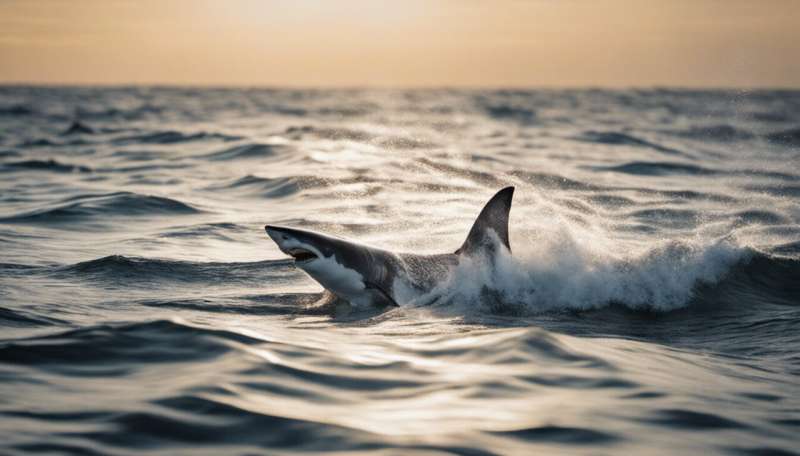
Southern Australia has many species of sharks and their relatives. Very few of these species pose any danger to humans, but we humans pose a serious danger to most of them.
For the first time, we now have a way to estimate the risk to each species of shark and their relatives—the dogfish, rays and chimeras—through our fishing and the ways we are changing the oceans.
Sharks are great parents—but there is a downside
Sharks and related species are amazing mothers, with fantastic ways to look after their babies. Blacktip and bull sharks, for example, have placentas, like we humans, to feed their young inside the mother until they are ready to be born.
Others, like manta rays, produce milk to feed their young before birth, while great white sharks produce unfertilised eggs for their babies to eat.
And in gray nurse sharks, the first babies to hatch out inside the mother eat all the other embryos and eggs inside her, so they are born big enough to survive.
Chimeras—like the elephant fish, a popular fishing target in Westernport Bay near Melbourne—produce very large eggs in a spear-shaped horny case, which accumulate fine silt and become buried in the seabed.
These adaptations make species vulnerable to fishing because the females produce a few, large and capable young rather than the large number of small eggs that many scale fish produce.
This means the mothers often cannot replace those we humans kill fast enough to keep their numbers from dwindling away.
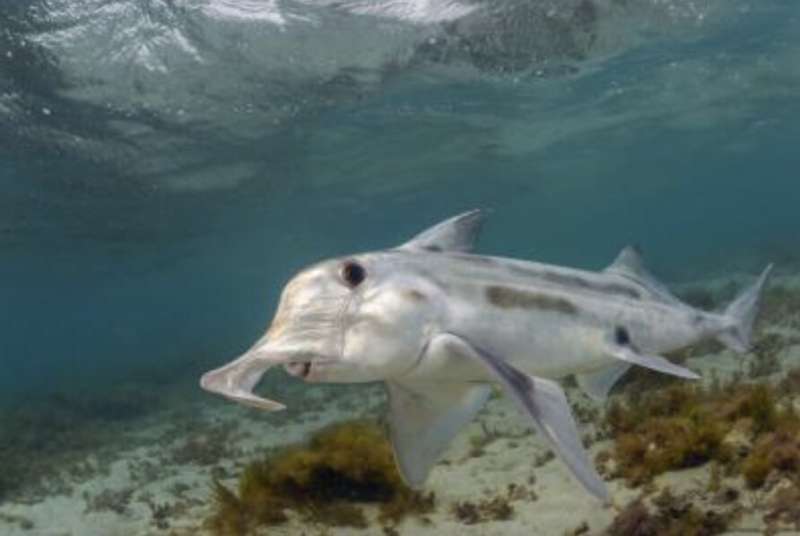
Estimating the dangers to sharks
Worldwide, fishing has killed too many of these animals over the last half-century.
And you may be surprised to learn that there are claims that Melbourne is the shark-eating capital of the world—fried shark, or flake as we call it, is a staple weekly food for many families.
In addition to overfishing, the carbon dioxide humans produce leads to warming of the oceans, making them more acidic.
To protect sharks, fishery managers need to know how much risk each species is under, but getting data on how each species are affected is impossible.
Our paper, published in the journal Fish and Fisheries, along with many co-authors, lays out a new method to calculate how vulnerable each species is to fishing and other human activities, including climate change, under various scenarios.
Of a number of factors, we use three key ones to estimate how vulnerable each species is to a type of fishing.
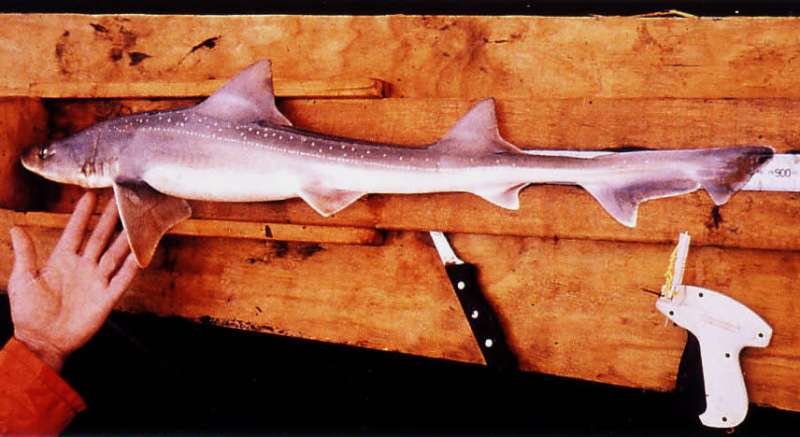
The first is the total area in which the species is found compared to the fishing area. Secondly, is understanding how likely a shark is to be caught and/or killed by the fishing gear used and, finally, how rapidly an individual can be replaced by the mothers in the population.
We divided species into ecological groups, based on their habitats and the depths at which they live.
Risks vary between habitats, and depth is important because it changes the risk from different types of fishing and the likely impact of climate change, which affects shallower waters more than deeper layers of the oceans.
We applied this method to all 132 species of local sharks and their relatives in southern Australia.
Unprecedented risks for these ancient animals
Sharks and their relatives are an ancient group that have endured extinction events in Earth's history involving high levels of carbon dioxide. But the expected rates of temperature change are much faster now than in these previous events—particularly in south-eastern Australian waters.
As our waters warm, we can expect the species that live on sand and mud on the continental shelf will move south to deeper (and cooler) water on the outer continental shelf, or move to where more deep, cold water comes up off South Australia.
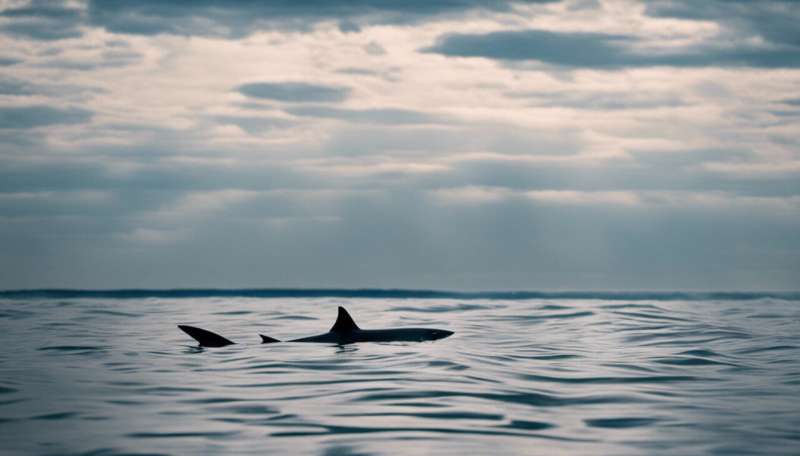
Species that live on or around reefs will likely be more affected, as most reefs are in shallow water, and species currently there may end up being displaced by incoming subtropical species.
We evaluated the risks to sharks under low, medium and high-emission scenarios of greenhouse gases in 2100, and under two fishing scenarios, before and after significant fisheries management reform beginning in 2006 greatly reduced fishing pressure. It was at this time for example, that Australia, banned most fishing below a depth of 700 meters.
We showed how many species are vulnerable to four types of fishing under these five scenarios.
Trawl fishing pre-2006 made many species vulnerable, but the management reforms have mostly solved this problem.
In particular, gillnets—which are long rectangular nets set horizontally along the ocean floor—have revolutionized shark fishing in southern Australia, which targets mainly gummy sharks.
These gillnets are designed to catch only mid-sized gummy sharks. This allows the large mothers to live a long life and replace the juveniles lost to fishing.
Of course, gillnets do not only catch gummy sharks. The 'by-catch' includes smaller and some larger shark species, only a few of which are rendered moderately vulnerable by this type of fishing.
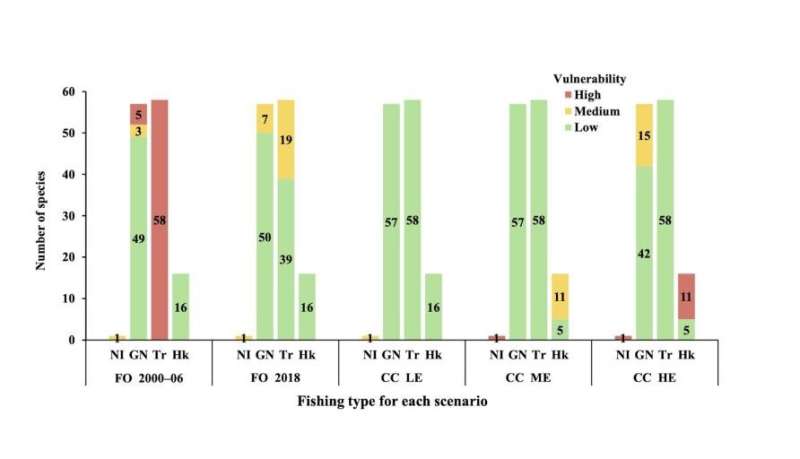
For climate change effects alone, we found only the highest emissions scenario is expected to seriously increase the vulnerability of many species by 2100.
But when the risks from the current fishing stress and the high emissions scenario were combined—we found that 25 species of shark were at high risk, 70 species at medium risk, and 37 species at low risk.
This shows us that we can't be complacent, even under current 'best practice' management, if climate change runs unchecked.
Our results provide advance warning about which species Australian fisheries managers need to protect.
Worldwide implications
Our research is not only relevant to Southern Australia.
Our co-authors include shark researchers in various countries, and we worked hard to ensure that fishery managers could understand and use our method to protect sharks that are most at risk in various parts of the world.
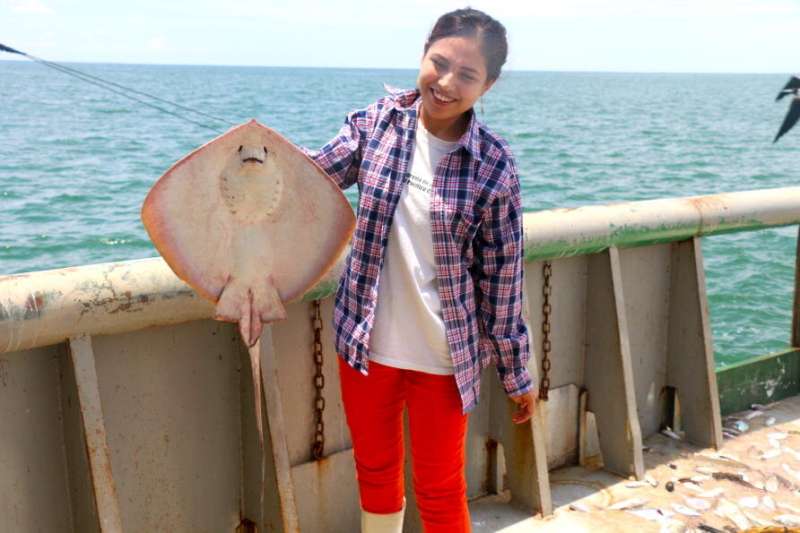
Dr. Karla Garces-Garcia, a co-author from Mexico who recently completed her Ph.D. at the University of Melbourne, has used this method to evaluate the vulnerability of sharks and their relatives in the Gulf of California and the Pacific coast of Mexico.
But we also expect that our method could be modified to identify other types of animals that are threatened by our planet's truly most dangerous animal—humans.
Explore further
Citation: Estimating man's danger to sharks (2021, August 24) retrieved 24 August 2021 from https://ift.tt/3sJJmYp
This document is subject to copyright. Apart from any fair dealing for the purpose of private study or research, no part may be reproduced without the written permission. The content is provided for information purposes only.
"danger" - Google News
August 24, 2021 at 08:56PM
https://ift.tt/3sJJmYp
Estimating man's danger to sharks - Phys.org
"danger" - Google News
https://ift.tt/3bVUlF0
https://ift.tt/3f9EULr
No comments:
Post a Comment